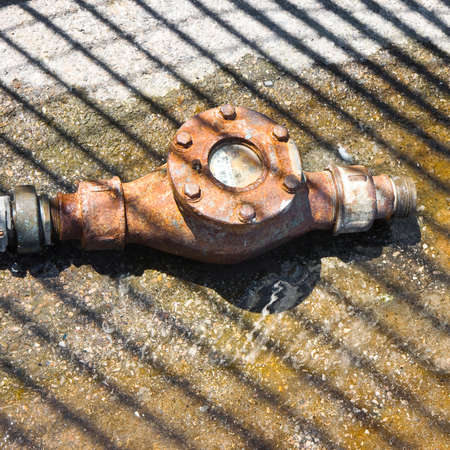Inspect for Leaks and Drips
Keeping a close eye on your plumbing is key to maintaining a healthy home in the UK. One of the simplest yet most effective DIY checks is to regularly inspect taps, joints, and visible pipework for any signs of leaks or persistent dripping. Early detection not only prevents water wastage—a crucial concern given rising utility costs—but also helps you avoid expensive repairs down the line. Grab a torch and take a few minutes each month to look under sinks, around toilets, behind appliances, and along skirting boards for moisture or puddles. Here’s a handy checklist to guide your inspections:
| Area | What to Check | Action if Issue Found |
|---|---|---|
| Taps (Kitchen/Bathroom) | Look for drips, corrosion, or limescale buildup | Replace washers or call a plumber if needed |
| Pipes under Sinks | Feel for dampness or water stains | Tighten joints or apply sealant tape |
| Toilets | Check around base for pooling water | Inspect seals and replace if necessary |
| Radiators & Central Heating Pipes | Look for rust, leaks or green/white deposits at joints | Bleed radiators or consult a heating engineer |
This simple monthly routine can help you catch small issues before they become big headaches—keeping both your home and your wallet in top condition.
2. Clear Blocked Drains
Keeping your property’s sinks, baths, and showers free-flowing is essential for avoiding bigger plumbing issues down the line. In the UK, where hard water can lead to limescale build-up and older pipes may be prone to blockages, regular drain maintenance is especially important. Here are some DIY-friendly methods and tools that UK homeowners can use to clear blocked drains efficiently and on a budget.
Common Causes of Blocked Drains in UK Homes
| Area | Typical Blockage Culprit |
|---|---|
| Kitchen Sinks | Fat, oil, food scraps |
| Bathroom Sinks & Showers | Hair, soap scum, toothpaste |
| Baths | Limescale, hair, bath oils |
DIY Drain Unblocking Methods
- Boiling Water: Pouring a full kettle of boiling water down the drain can help dissolve minor grease and soap build-up. It’s safe for most modern pipework but avoid if you have PVC pipes or suspect a severe blockage.
- Baking Soda & Vinegar: Pour half a cup of baking soda followed by half a cup of white vinegar down the drain. Leave for 10-15 minutes before flushing with hot water. This eco-friendly method is great for light blockages.
- Plunger: A good old-fashioned plunger can dislodge stubborn debris. Ensure there’s enough water in the sink or bath to cover the plunger’s rubber part for best results.
UK-Friendly Drain Cleaners
If home remedies don’t do the trick, look for drain unblocking solutions available at local shops like B&Q, Wickes, or even larger supermarkets. Always read the label to ensure they’re suitable for your type of pipes (especially in older UK homes).
Preventative Tips
- Use plughole strainers to catch hair and food particles.
- Avoid pouring cooking fat or oil down kitchen sinks—collect it in a container and bin it instead.
- Flush bathroom drains monthly with boiling water or baking soda and vinegar as a preventative measure.
By incorporating these affordable and practical drain maintenance steps into your regular home care routine, you’ll keep your property’s plumbing flowing smoothly and dodge costly call-outs from plumbers.

3. Check Water Pressure
Keeping an eye on your home’s water pressure is a must for UK property owners aiming to avoid costly plumbing issues. Too much pressure can strain pipes and joints, while too little can signal hidden leaks or blockages. To check yours, grab a UK-standard water pressure gauge—these are affordable at most DIY shops. Attach the gauge to your kitchen tap (or any mains-fed tap) and compare the reading against the recommended range for UK homes: typically 1 to 3 bar. If you notice your readings consistently outside this bracket, it’s worth investigating further or calling in a professional. Monitoring regularly helps prevent unnecessary stress on your plumbing, saving you money down the line.
Water Pressure Guide for UK Homes
| Pressure (bar) | Status | Potential Issues |
|---|---|---|
| Below 1 | Too Low | Poor flow, possible leaks or blockages |
| 1 – 3 | Ideal Range | Optimal for most household needs |
| Above 3 | Too High | Pipe strain, leaks, appliance damage |
DIY Tip:
If your water pressure is high, consider fitting a pressure-reducing valve—a budget-friendly fix that could save you from pricey repairs later. Regular checks mean fewer surprises and a well-maintained plumbing system for years to come.
Maintain Radiators and Central Heating
Ensuring your radiators and central heating are in top condition is a must for UK homes, especially before the chilly winter months arrive. Bleeding your radiators annually not only keeps your property warm but also helps you avoid high energy bills—an important consideration for any budget-conscious homeowner.
How to Bleed Your Radiators
- Turn off the heating and let the system cool down.
- Use a radiator key to open the valve at the top of each radiator.
- Hold a cloth beneath the valve to catch any drips.
- Once water starts to flow steadily, close the valve tightly.
This simple DIY step removes trapped air, ensuring heat circulates efficiently throughout your home and prevents cold spots—a common issue in older UK properties.
Boiler Inspection Checklist
According to UK property norms, inspecting your boiler annually is essential for both safety and efficiency. While it’s wise to book a Gas Safe registered engineer for a full service, here are some tasks you can check yourself:
| Task | Frequency | DIY or Professional? |
|---|---|---|
| Check pressure gauge | Monthly | DIY |
| Listen for unusual noises | Seasonally | DIY |
| Inspect for leaks | Monthly | DIY |
| Annual service | Yearly | Professional (Gas Safe engineer) |
Tackling these checks before winter hits will help keep your heating system running smoothly, reduce repair costs, and keep your household comfortable all season long. Remember, keeping up with these maintenance tasks isn’t just about comfort—it also protects your investment in your property and helps meet UK letting standards if you’re a landlord.
5. Lag Pipes for Winter
One of the most important tasks for UK homeowners is to lag your pipes before winter sets in. The British climate is notorious for sudden cold snaps, and unprotected pipes can freeze and burst, leading to costly repairs and significant water damage. Applying lagging (insulation) to exposed pipework, particularly in lofts, garages, and any external areas, helps keep your plumbing system safe during the colder months.
Why Lagging Matters
Pipes that run through unheated spaces are at high risk of freezing. When water freezes, it expands—this can cause cracks or even burst pipes, which may not be immediately obvious until a thaw reveals leaks or flooding. Proper insulation not only prevents this scenario but also helps reduce energy bills by keeping hot water hotter for longer.
DIY Lagging: What You Need
| Item | Purpose | Average Cost (per metre) |
|---|---|---|
| Pipe Insulation Foam Tubes | Main insulation for pipes | £1 – £2 |
| Duct Tape or Cable Ties | Securing the foam in place | £1 – £3 per roll/pack |
| Scissors or Utility Knife | Cutting insulation to size | Already in most toolkits! |
Step-by-Step DIY Guide:
- Measure the length and diameter of all exposed pipes you need to insulate.
- Select the appropriate size of foam lagging tubes from your local DIY shop or builder’s merchant.
- Cut the foam tubes to fit each section of pipework using scissors or a utility knife.
- Open up the slit in the foam and slide it over the pipe.
- Secure the insulation with duct tape or cable ties, especially at joints and bends.
- Check lofts, under-sink cupboards, garages, and any outdoor taps for exposed pipes—they’re prime candidates for lagging.
Bonus Tip: Don’t Forget Outdoor Taps!
If you have garden taps, consider fitting an insulated tap cover as well. These are inexpensive and easy to install—just slip them over the tap when frost is forecast. This small investment can save you from big headaches down the line.
6. Test Stopcock and Isolation Valves
One of the most crucial yet often overlooked plumbing maintenance tasks in UK properties is testing your main stopcock and isolation valves. These valves allow you to swiftly shut off the water supply in an emergency, such as a burst pipe or major leak. Regularly checking these components ensures they remain operational and accessible when you need them most.
Why Testing Matters
If your stopcock or isolation valves are stiff, corroded, or stuck, you could lose valuable time during a plumbing emergency—potentially leading to costly water damage. In older UK homes, especially Victorian terraces or pre-war semis, these valves may not have been checked for years. Don’t wait until disaster strikes; prevention is always cheaper than repairs!
How to Test Your Stopcock and Isolation Valves
- Locate the Main Stopcock: Typically found under the kitchen sink or where the mains water enters your home.
- Turn Off the Valve: Gently turn it clockwise to shut off the water. If it won’t budge, don’t force it—use a little WD-40 or seek professional help.
- Check Water Flow: Open a cold tap to ensure the water stops completely.
- Turn On Again: Rotate the valve anti-clockwise to restore your supply.
- Repeat for Isolation Valves: Usually located near appliances (e.g., washing machine or loo), these should also be turned off and on to confirm they work smoothly.
Quick Reference Table: Common Locations
| Valve Type | Typical Location | Frequency to Test |
|---|---|---|
| Main Stopcock | Under kitchen sink/front hallway cupboard | Every 6 months |
| Toilet Isolation Valve | Behind toilet cistern | Every 6 months |
| Appliance Isolation Valve | Behind washing machine/dishwasher | Every 6 months |
BUDGET TIP:
If your stopcock is hard to turn, try applying a silicone-based lubricant before calling a plumber. Also, make sure everyone in your household knows where the stopcock is—it could save you hundreds of pounds in an emergency!
7. Look for Signs of Damp and Mould
In UK properties, damp and mould are all too common due to our often wet climate and older housing stock. These issues can be more than just unsightly—they frequently signal hidden plumbing leaks that can lead to costly repairs if left unchecked. Be vigilant for damp patches, water stains, or mould growth near sinks, bathrooms, behind kitchen appliances, or around radiators. Early detection is key to saving money and maintaining your home’s value.
Common Places to Check for Damp and Mould
| Area | What to Look For |
|---|---|
| Bathrooms & Toilets | Mould on ceilings, peeling paint, musty smell |
| Kitchens | Damp under sinks, water stains in cupboards, condensation on windows |
| Utility Rooms | Patches behind washing machines or dishwashers |
| Bedrooms & Living Rooms | Damp at skirting boards or corners of external walls |
DIY Tip:
If you spot any signs, run your hand over the area—damp patches will feel cold or wet to the touch. Use a torch to inspect hidden spots behind furniture and inside cupboards.
Budget-Saving Solutions:
- Address small leaks yourself by tightening fittings or replacing worn washers.
- Use moisture absorbers or a dehumidifier to reduce dampness while you investigate the source.
- If the problem persists, consider calling a local plumber before it escalates into a bigger (and pricier) issue.
Regularly checking for these signs not only helps keep your plumbing in top condition but also protects your property from long-term damage—a wise move for every UK homeowner looking to save money and stress in the long run.


